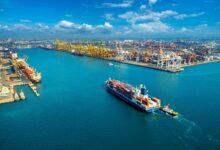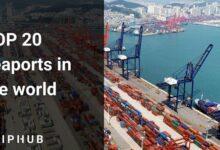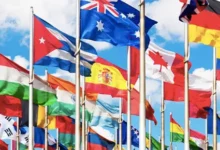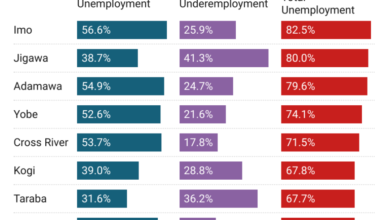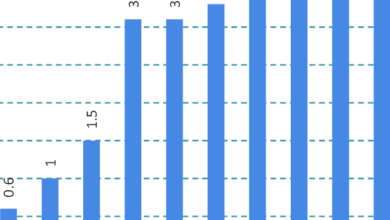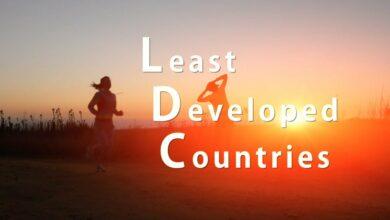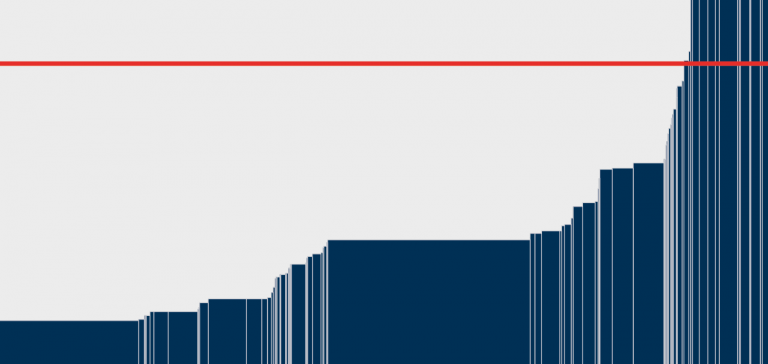
Top 15 Countries with High Poverty Rates in the world
Top 15 Countries with High Poverty Rates in the world – Poverty remains one of the biggest challenges facing humanity in the 21st century. Despite significant progress made in reducing poverty levels globally, there are still hundreds of millions of people living in extreme deprivation around the world. Poverty denies people access to basic needs such as food, clean water, healthcare, education, and shelter. This article will examine the top 15 countries with the highest poverty rates globally based on data from reputable organizations such as the World Bank and United Nations. It will analyze the key drivers of poverty in each country and the efforts being made to eradicate poverty.Top 15 Countries with High Poverty Rates in the world
The Top 15 Countries with high poverty rates in the world are:
1. South Sudan – 82.30%
South Sudan has the unwelcome distinction of having the highest poverty rate in the world at a shocking 82.30%. Poverty levels are so high due to the long-running civil war that has displaced millions and destroyed infrastructure and livelihoods. South Sudan has abundant oil reserves but the revenues benefit only an elite few. The country has poor access to basic services such as education, healthcare, electricity, and clean water. Despite gaining independence in 2011, South Sudan remains burdened by inter-ethnic tensions and violence. Corruption is rampant, further undermining poverty-reduction efforts. Foreign aid has been crucial but more needs to be done to build institutional capacity, diversify the economy away from oil, and create employment opportunities. There are nascent signs of progress with the formation of the unity government but restoring stability and rehabilitating infrastructure remain key priorities.
👉 Relocate to Canada Today!
Live, Study and Work in Canada. No Payment is Required! Hurry Now click here to Apply >> Immigrate to CanadaRead Also: Top 15 Stress Relief Tips for Adult in Nigeria
2. Equatorial Guinea – 76.80%
Equatorial Guinea has Sub-Saharan Africa’s highest per capita income but this wealth is concentrated in the hands of a few while most of the population lives in poverty. The country’s sizeable oil revenues enrich those with ties to the authoritarian government while neglecting human development. About three-quarters of the population live on less than $2 a day despite the nation’s abundant natural resource wealth. Corruption and nepotism are widespread while economic mismanagement means oil revenues are not invested in poverty reduction or diversifying the economy. Equatorial Guinea has one of the world’s lowest primary school enrollment rates at 50%. Limited access to education, healthcare, clean water, and sanitation entrench high poverty levels. To reduce poverty, Equatorial Guinea needs transparent management of oil revenues, massive investment in public services, economic diversification, and good governance based on the rule of law.
3. Madagascar – 70.7%
Madagascar has a poverty rate of 70.7% partly due to political instability and frequent natural disasters. About 75% of the population lives on less than $1.90 a day. After a coup in 2009, poverty reduction programs were suspended which reversed socioeconomic gains. Droughts, floods and cyclones often destroy infrastructure, homes and livelihoods, setting back anti-poverty efforts. Poverty is concentrated in rural areas which lack roads, electricity and public services. Corruption and weak governance hamper the equitable provision of social services. Foreign aid and investment have declined due to the poor business environment. However, Madagascar has a young, predominantly rural population which represents an opportunity if their skills can be developed. Increased public investment, access to education and healthcare, climate-smart agriculture, and resilient infrastructure are vital for sustainable poverty reduction.
4. Guinea-Bissau – 69.3%
Guinea-Bissau has a poverty rate of 69.3% driven by political instability and inadequate social services. About two-thirds of the population lives below the poverty line. The country has seen nine coups or attempted coups since independence in 1974, creating a perpetual state of insecurity. Conflict and misrule have deprived basic services like education, healthcare, and infrastructure of funding and investment. Nearly 60% of children do not attend primary school. Cashew nut farming accounts for over 90% of exports but is vulnerable to climate shocks. Illegal logging also thrives in the conflict environment. To reduce endemic poverty, Guinea-Bissau needs deep reforms to improve governance, strengthen public institutions, and diversify the economy beyond cashew nuts. Targeted support for farmers and investing oil revenue in pro-poor sectors can make progress in lifting millions out of poverty.Good morning My Love Message
Read Also: Top 15 Link Building Tools in Nigeria
5. Eritrea – 69%
Eritrea’s poverty rate stands at 69% driven by its tumultuous history of conflict. Following a 30-year war of independence with Ethiopia, a border war erupted in 1998-2000 which claimed over 70,000 lives and left the economy in tatters. To this day Eritrea remains on a war footing with compulsory conscription which saps productivity and investment. The authoritarian government presides over a mismanaged, undemocratic system with human rights violations. Agriculture employs about 80% of Eritreans but frequent droughts and lack of infrastructure make fighting poverty difficult. Improvements in living standards are hampered by economic isolation as international sanctions remain in place. If stability and security can be achieved, investment in agriculture, infrastructure, mining and manufacturing can create employment and reduce poverty in the long run.
6. São Tomé and Príncipe – 66.7%
The island nation of São Tomé and Príncipe off the West African coast has a poverty rate of 66.7%. Being a small, tropical island state makes it vulnerable to external shocks such as rising commodity prices. Agriculture remains dominant but is largely subsistence-based with poor yields, low productivity and little value addition. Tourism has potential but remains underdeveloped. Fiscal deficits and debt are high while social services are inadequate, all of which constrain poverty alleviation. Efforts to reduce poverty have centred on improving healthcare and education access. But more needs to be done to diversify exports, deliver sustainable agriculture growth, develop the private sector including tourism and build climate resilience. With political stability since 1990, democratic reforms can deliver shared prosperity.NYSC Portal
7. Burundi – 64.9%
Burundi has a poverty rate of 64.9% driven by civil war, political unrest, and dependence on subsistence agriculture. Since independence in 1962, ethnic conflict between Hutus and Tutsis has claimed hundreds of thousands of lives and displaced millions. A 12-year civil war to 2005 and continued political violence have kept Burundi in poverty and underdevelopment. 90% rely on subsistence farming but low agricultural productivity leaves many households vulnerable to poverty. Public services like health and education are inadequately funded. With one of the world’s lowest GDP per capita, lifting millions out of poverty requires political stability, investing in human capital and farmers, expanding non-farm sectors, and integration into regional markets.JAMB portal
👉 Relocate to Canada Today!
Live, Study and Work in Canada. No Payment is Required! Hurry Now click here to Apply >> Immigrate to Canada8. Democratic Republic of the Congo – 63.9%
The Democratic Republic of Congo has an estimated poverty rate of 63.9%, one of the highest in the world. This is largely due to decades of conflict, political instability and corruption since independence in 1960. Infrastructure is poorly developed after years of war while the education and healthcare systems are underfunded and inadequate. Despite immense natural resource wealth, decades of misrule have left most Congolese impoverished while elites benefit from mineral revenues and graft. Most remain dependent on subsistence agriculture, rendering them vulnerable to poverty. Sustained poverty reduction requires deep governance reforms, massive investment in infrastructure and human capital and formalizing the large informal sector. With political stability and prudent management of its resources, the DRC can lift millions out of abject poverty.
Read Also: Top 15 Greatest Guitar Solos of all Time
9. Central African Republic – Poverty rate: 62%
The Central African Republic’s poverty rate stands at around 62% driven by years of armed conflict and political instability. Since gaining independence from France in 1960, the landlocked country has seen numerous coups and rebellions that have destroyed infrastructure and displaced over a million people. With some of the lowest human development indicators in the world, poverty remains deeply entrenched. Ongoing insecurity disrupts agriculture which employs most Caribbeans while hindering humanitarian access. Diamonds account for nearly half of exports but most locals do not benefit from mineral wealth. CAR is stuck in a fragility and underdevelopment trap. Restoring stability and rebuilding public institutions and infrastructure can spur development and reduce poverty over time. But this requires sustained regional and international support.
10. Guatemala – 59.3%
Guatemala has a poverty rate of 59.3% largely due to low tax revenues restricting investment in health, education and social protection. Most poor Guatemalans belong to indigenous groups or live in rural areas working in low-productivity agriculture. Corruption and high crime levels deter private investment and growth. Remittances from Guatemalans abroad are a crucial lifeline for many households. To reduce poverty, Guatemala needs to implement land reforms, invest in rural infrastructure, health and education, create off-farm economic opportunities and build a progressive tax system to fund anti-poverty programs. With good governance, pro-poor growth and support for marginalized groups, Guatemala can make strides in lowering poverty.
11. Malawi – 58.7%
Malawi has a poverty rate of 58.7% driven by low agricultural productivity, high inequality, climate shocks and rapid population growth. More than half the 18 million population live below the poverty line. Dependent on rain-fed smallholder agriculture, Malawians are vulnerable to poverty with every drought or flood that disrupts harvests. Chronic malnutrition leaves stunting rates among the highest globally. With limited industrialization, the economy cannot absorb a fast-growing, young population. While donor aid has expanded access to education and health, poverty remains entrenched. For Malawi to make sustained gains against poverty, increased agricultural productivity, rural development, resilient infrastructure, affordable inputs for farmers and adaptation to climate change are crucial.Information guide Nigeria
12. Mozambique – 57.7%
Mozambique has a poverty rate of 57.7% driven by a civil war from 1977-1992 that destroyed the economy. Although it is now politically stable, Mozambique remains one of the poorest and most underdeveloped countries. Agriculture provides livelihoods for most Mozambicans but suffers from low productivity, a lack of infrastructure and modernization. High levels of corruption and red tape impede business investment and growth. The education and health systems are grossly inadequate leading to low human capital. Poverty is concentrated in rural areas. While the economy is now growing steadily, most Mozambicans are excluded from the benefits. Broad-based growth, agricultural modernization and investing resource revenues in health, education and infrastructure hold the key to durable poverty reduction.Information guide Nigeria
Read Also: Top 15 Signs and Effect of Piriformis Syndrome
13. Chad – 55.9%
Chad has a poverty rate of 55.9% driven by years of civil war and instability, landlocked geography, desertification and lack of infrastructure. Chadians largely rely on subsistence agriculture and pastoralism which are vulnerable to droughts, soil erosion and environmental degradation. Unreliable rainfall leaves millions on the brink of starvation regularly. With limited access to education, health facilities, markets and social services, most Chadians live in poverty without the ability to improve their livelihoods. Chad’s oil reserves have not benefitted the poor due to mismanagement and investment in military spending. Chad needs to redirect oil revenues towards health, education and economic diversification to reduce poverty in the long run.
14. Niger – 55.2%
Niger has an alarming poverty rate of 55.2% driven by high population growth, low agricultural productivity and lack of infrastructure or connectivity to markets. With an average of 7 children per woman, population growth outpaces economic growth. Frequent droughts devastate crops and livestock, leaving millions of desert dwellers malnourished and impoverished. The lack of rural infrastructure makes accessing markets difficult. High levels of malnutrition and illiteracy lock generations into the poverty trap. Niger has sizeable reserves of gold, coal, and iron ore but these have not yet benefitted ordinary Nigeriens. Tackling poverty requires implementing family planning programs, investing in rural infrastructure, boosting small farmer productivity and promoting girls’ education.Romantic love message
15. Sierra Leone – 53.1%
Sierra Leone has a poverty rate of 53.1% which is a legacy of the 1991-2002 civil war that caused widespread destruction. Agriculture employs about two-thirds of Sierra Leoneans but is mostly at a subsistence level. Reliance on a few commodity exports like diamonds, rutile and bauxite leaves the economy vulnerable to price shocks. Corruption and weak governance undermine efforts to reduce poverty. Improvements in education and health have been achieved since the war but more progress is needed. For a country that remains heavily reliant on foreign aid, strengthening domestic revenue mobilization is critical to reducing poverty. Investing in infrastructure, supporting farmers, creating jobs and building human capital must remain priorities.
Read Also: Top 15 Career Prize Money in Sport
Conclusion:
Poverty remains one of the biggest obstacles to human progress globally. As this article has shown, war, instability, corruption, lack of infrastructure and reliance on subsistence agriculture are major drivers of endemic poverty across many of the world’s poorest countries. Tackling these root causes through the promotion of good governance, targeted investments, economic diversification and building resilience are crucial for lifting millions out of abject poverty. But nothing less than a global, collective and sustained effort is required if we are to permanently eradicate extreme poverty and deprivation. The world’s poorest countries need the support of the international community to escape poverty traps. But ultimately, political will from national governments is the lynchpin. With visionary leadership committed to equitable growth and human development, even the world’s poorest countries can embark on a trajectory out of poverty.
Check JAMB RESULT
Check and Confirm: How much is Dollar to Naira
